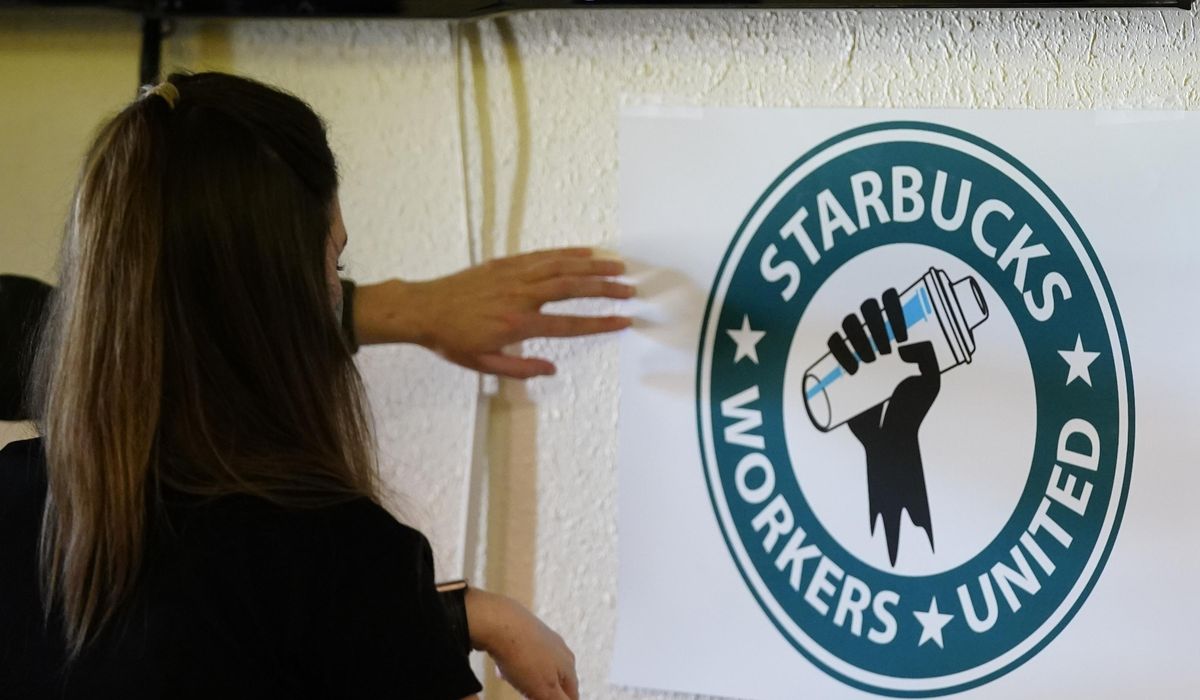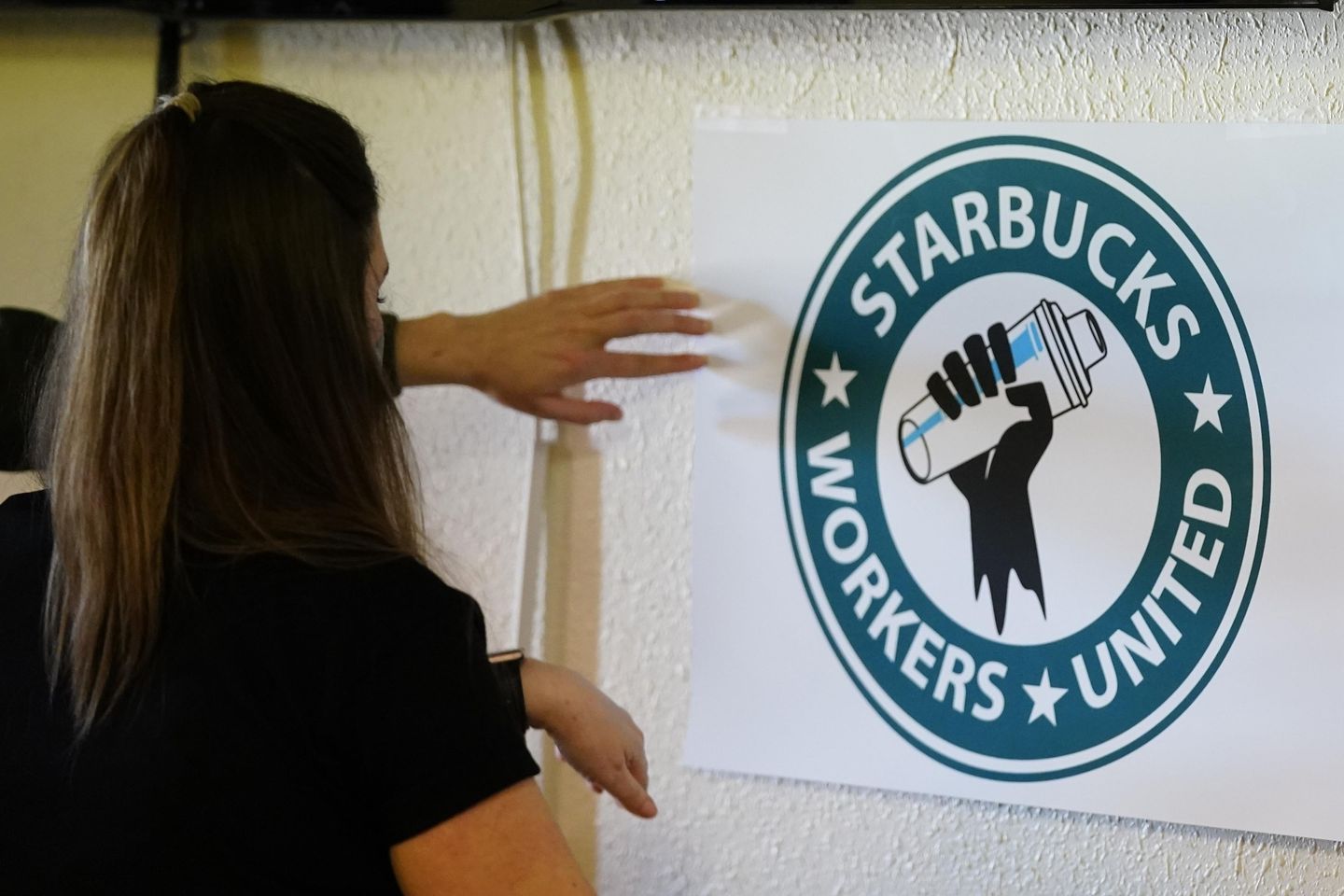Baristas, teachers lead surge in strikes as worker discontent grows


Starbucks baristas and public school teachers led a surge in labor strikes last year as worker unhappiness reached new highs emerging from the coronavirus pandemic, recent reports show.
The number of strikes increased by 52%, from 279 in 2021 to 424 last year, and the number of workers involved rose by 60%, from 140,000 to 224,000, Cornell University’s Labor Action Tracker found.
The numbers confirm multiple reports of growing discontent in the workforce as businesses emerge from COVID-19 restrictions.
“This is yet another sign of the massive disruption of lockdowns and vaccine mandates. They demoralized both workers and business owners, shocking markets both economically and psychologically,” said Jeffrey Tucker, president of the free-market Brownstone Institute for Social and Economic Research. “We can further assume that the problems will get worse.”
The Cornell report comes as Sen. Bernard Sanders, Vermont independent and chairman of the Senate Health, Education, Labor and Pensions Committee, prepares to hold a vote Thursday to subpoena Starbucks CEO Howard Schultz.
Mr. Schultz has refused to testify voluntarily before Mr. Sanders’ committee about the Seattle-based coffee giant’s labor practices.
Of the 417 strikes and seven lockouts Cornell tracked last year, 7,000 accommodation and food service workers organized more work stoppages (144) than any other industry.
And 91% of those food service stoppages (131) were launched by workers organizing with the Starbucks Workers United campaign or fast-food workers organizing with the Fight for $15 minimum wage campaign.
While Starbucks led the number of strikes, Cornell found 60% of all workers involved in work stoppages were in the educational services industry, where 135,380 teachers and other employees stopped working. Most strikes lasted less than five days, Cornell said.
The findings confirm that workers emerging from the pandemic want a “fulfilling workplace culture” where they feel “productive and appreciated for their work,” said Andrew Crapuchettes, CEO of RedBalloon, an Idaho-based recruitment agency.
“Post-pandemic, the workplace is still unsettled,” Mr. Crapuchettes said. “The discontent isn’t necessarily about compensation.”
Starbucks workers have filed 497 open or settled unfair labor charges with the National Labor Relations Board, which is pursuing 76. The baristas, who started organizing during the pandemic, have accused the company of “coercive actions” like threatening employee benefits and firing some employees who attempted to unionize.
“Strike activities have focused on contract negotiations for the less than 3% of our U.S. company-owned stores represented by Workers United,” said Starbucks spokesman Andrew Trull. “These publicity actions are expected, though unfortunate, and continue to distract from our efforts to move the bargaining process forward.”
According to the NLRB, which has the authority to make companies rehire unfairly terminated employees, Starbucks has submitted 83 counter-complaints that allege union representatives refused to bargain or bargained in bad faith.
Administrative law judges have sided with the union in several cases, including one who ruled last month that Starbucks engaged in unfair labor practices by telling employees of the Reserve Roastery location on Capitol Hill that they would lose existing benefits if they unionized.
According to the NLRB, requests to hold union elections increased by 58% in the first three quarters from fiscal 2021 to 2022. Workers won union elections at Amazon, Google, Trader Joe’s and Verizon in addition to Starbucks.
In a series of tweets in October, AFL-CIO President Liz Shuler praised the surge in organizing, dubbing the month “Striketober.”
As a tight labor market emboldens workers to make more demands under the union-friendly Biden administration, public employers are also seeing surges in strike activity.
Intervention by President Biden and his top advisers averted a strike in September by as many as 150,000 freight railroad workers, which experts said would have added to rising consumer prices.
But more than 4,500 public school teachers and staff in Columbus, Ohio, and more than 6,000 teachers and staff in Seattle, walked out last year.
“About half of all union members are government workers,” said Michael Warder, a former Pepperdine University vice chancellor and California-based business consultant. “The rate of government union membership is five times higher than in the private sector.”
According to labor advocates, several victories have encouraged teachers to complain about low pay and burnout.
From January 2021 to February 2022, the National Conference of State Legislatures reports that 25 states enacted or proposed legislation to raise teacher salaries.
“This is welcome news and may help to reverse declining interest in teaching,” said Jacqueline E. King, a senior consultant at the American Association of Colleges for Teacher Education.
Unions that went on strike to delay the return to in-person learning during the pandemic have divided the Democratic Party, which has traditionally supported teachers.
Illinois Gov. J.B. Pritzker, a Democrat, recently signed a law letting Chicago school principals unionize and strike. But Massachusetts Gov. Maura Healey, a fellow Democrat in an equally deep-blue state, opposes similar legislation.
Teacher strikes are now explicitly legal in 12 states: Alaska, California, Colorado, Hawaii, Illinois, Louisiana, Minnesota, Montana, Ohio, Oregon, Pennsylvania and Vermont. They are illegal in the other 38.
Mr. Biden is fond of saying he wants to lead “the most pro-union administration in American history.”
“When unions win, workers across the board win,” Mr. Biden said at a labor event in September. “That’s a fact. Families win, community wins, America wins. We grow. And despite this, workers have been getting cut out of the deal for too long a time.”
But as schools and small businesses face inflationary pressures, conservative free market advocates have urged the president to reconsider that rhetoric.
According to Gallup’s State of the Global Workplace: 2022 report, half of U.S. workers feel stressed at their jobs daily, 41% feel worried, 22% feel sad and 18% feel angry even as the pandemic wanes. And conservatives say adding to employer labor costs in ways that force them to raise prices isn’t going to make workers happier.
“The significant increase in workplace strikes over the last year is yet more proof that labor unions are failing to deliver for their members,” Alfredo Ortiz, president and CEO of Job Creators Network, said in an email.
For more information, visit The Washington Times COVID-19 resource page.
[ad_2]
Share this news on your Fb,Twitter and Whatsapp
Times News Network:Latest News Headlines
Times News Network||Health||New York||USA News||Technology||World News